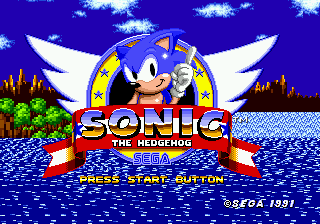Difference between revisions of "Display the Press Start Button text"
From Sonic Retro
Scarred Sun (talk | contribs) m (Text replace - '[[Category:SCHG How-tos|' to '{{S1Howtos}} [[Category:SCHG How-tos|') |
m (I am such a blowhard) |
||
| Line 32: | Line 32: | ||
Now, the PSB object is initialised in object RAM slot $D080 on line 3237 of the disassembly I'm currently using (modified by [[Pu7o]] to work on Linux; it's just under the label Title_ClrObjRam2, in case it's not the same line in an unmodified Sonic 1 disassembly). That same chunk of RAM is previously used for the SONIC TEAM PRESENTS (STP) object earlier in the TitleScreen routine (line 3162, adjust as necessary). | Now, the PSB object is initialised in object RAM slot $D080 on line 3237 of the disassembly I'm currently using (modified by [[Pu7o]] to work on Linux; it's just under the label Title_ClrObjRam2, in case it's not the same line in an unmodified Sonic 1 disassembly). That same chunk of RAM is previously used for the SONIC TEAM PRESENTS (STP) object earlier in the TitleScreen routine (line 3162, adjust as necessary). | ||
| − | The reason the PSB text doesn't appear is because the STP object scribbles in object RAM, but the TitleScreen routine only clears the top $1C bytes. Any data between $D09C and $D0A0 previously touched by the STB object is unmodified | + | The reason the PSB text doesn't appear is because the STP object scribbles in object RAM, but the TitleScreen routine only clears the top $1C bytes. Any data between $D09C and $D0A0 previously touched by the STB object is unmodified. |
The correction is simple enough; delete the object RAM for the object at $D080 more thoroughly. |2=[[Quickman]]}} | The correction is simple enough; delete the object RAM for the object at $D080 more thoroughly. |2=[[Quickman]]}} | ||
{{S1Howtos}} | {{S1Howtos}} | ||
[[Category:SCHG How-tos|Display the Press Start Button text]] | [[Category:SCHG How-tos|Display the Press Start Button text]] | ||
Revision as of 07:03, 9 December 2013
(Original guide by Quickman)
In the Sonic 1 is an object for a PRESS START BUTTON message on the title screen. However, in the final version it's not there. Well, not really. It is there, but it's invisible. To fix that you simply need to go to Title_LoadText:. Find this piece of code: <asm> lea ($FFFFD080).w,a1 moveq #0,d0 move.w #7,d1
Title_ClrObjRam2: move.l d0,(a1)+ dbf d1,Title_ClrObjRam2
move.b #$E,($FFFFD040).w ; load big Sonic object</asm> And replace it with this: <asm> lea ($FFFFD080).w,a1
- moveq #0,d0
- move.w #7,d1
- Title_ClrObjRam2
- move.l d0,(a1)+
- dbf d1,Title_ClrObjRam2
jsr DeleteObject2 ; clear object RAM to make room for the "Press Start Button" object move.b #$E,($FFFFD040).w ; load big Sonic object</asm>
And now you should be able to see this message:
| “ | I've finally isolated precisely why the PRESS START BUTTON (PSB) text doesn't appear on the Sonic 1 title screen, and given the nature I suspect it to be a bug in Sonic Team's original code. (You may now be shocked.)
Now, the PSB object is initialised in object RAM slot $D080 on line 3237 of the disassembly I'm currently using (modified by Pu7o to work on Linux; it's just under the label Title_ClrObjRam2, in case it's not the same line in an unmodified Sonic 1 disassembly). That same chunk of RAM is previously used for the SONIC TEAM PRESENTS (STP) object earlier in the TitleScreen routine (line 3162, adjust as necessary). The reason the PSB text doesn't appear is because the STP object scribbles in object RAM, but the TitleScreen routine only clears the top $1C bytes. Any data between $D09C and $D0A0 previously touched by the STB object is unmodified. The correction is simple enough; delete the object RAM for the object at $D080 more thoroughly. |
„ |
| — Quickman | ||
